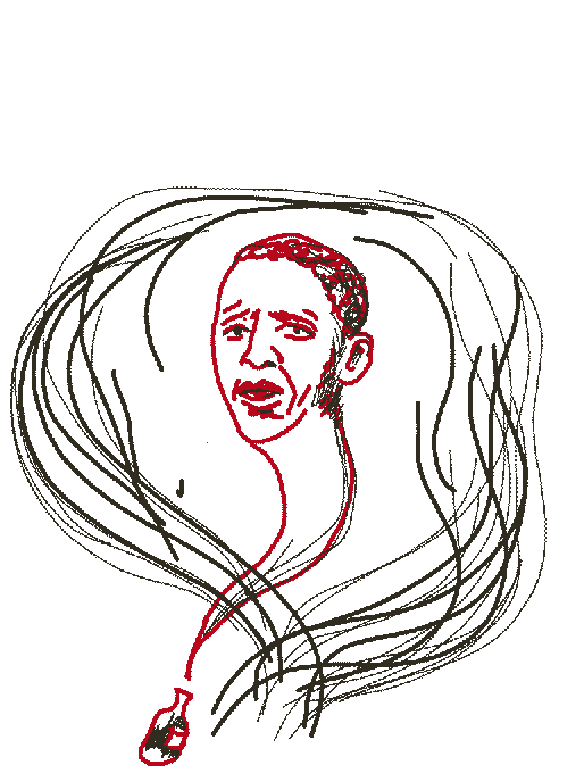The faithful come on the 14th of the month. Every month.
For three years now.
The massacre of 20 first-graders and six adults at Sandy Hook Elementary School on December 14, 2012, moved them to action. It began as a single protest, a way to show disgust at the National Rifle Association by assembling outside their headquarters here in Fairfax, Virginia.
But they knew one protest wasn’t enough. And they haven’t stopped.
They’ve braved pouring rain, near-blizzard conditions and sweltering heat. They are Americans fed up with the NRA’s agenda, sick of what they say is the group’s devotion to gunmakers.
They point to the blue-glass building that serves as the NRA headquarters. They do not mince words: Unpatriots. Cowards. Abetters of killers.
On Monday, nearly 400 protesters turned out for the third anniversary of the massacre at Sandy Hook. Their ranks included U.S. Rep. Gerry Connolly of Virginia, whose district includes the NRA headquarters. They were led by the parents of Alison Parker, a Roanoke, Virginia, TV reporter who was killed in August on live television along with her cameraman, Adam Ward.
Barbara Parker carried with her an NRA marksman’s patch that she won at summer camp in Texas in 1965 when she was a 15-year-old sharpshooter. She had planned to burn it in the shadows of the NRA headquarters, but she said she had an epiphany while there: She wants to hold onto the patch in hopes the NRA returns to its roots.
“I realized (the patch) is a symbol of what the NRA used to be: for sportsmen, for responsible gun ownership, and for safety,” she said. “I’d rather use it as a challenge to responsible gun owners rather than just burn the patch and be done with it.”
She said she challenged “the silent majority of gun owners to become that organization again. Do it for your children. For all our children.”
Andy Parker blasted the NRA’s leadership as being in the pockets of gun manufacturers and said it was time for the rank-and-file to reject them.
“The reality is the people inside this building are simply businessmen,” he said. “They don’t really care about you, your family, your community or frankly even their own members. All they want do do is sell guns.”

On any given month, the crowd here can range from a few dozen to hundreds. The NRA doesn’t engage with the protesters. Security guards stand, arms folded, in the parking lot and keep a watchful eye.
The demonstrators come in peace. They don’t advertise, for fear someone will drive by and open fire. They hold signs, stand on the sidewalk and encourage passersby to honk their horns in support. Their vigils last an hour.
Though the group acknowledges not every shooting can be prevented, they refuse to sit back and do nothing. At their previous demonstration November 14, they warned there would be another mass shooting and that the NRA’s massive lobbying army would be partly to blame.
And before they could gather again, their prediction came true: A right-wing extremist was arrested for shooting up a Planned Parenthood clinic in Colorado Springs, killing three, and a radicalized Muslim couple killed 14 in San Bernardino, California. It was the deadliest mass shooting since Sandy Hook.
Inside the NRA’s treasure chest
A day later, as if on cue, Senate Republicans shot down legislation that would prevent people on the FBI’s terror watch list from purchasing guns or explosives and defeated a bill that would have expanded background checks to gun shows and online sales in an attempt to keep guns out of the hands of the seriously mentally ill and convicted felons.
The NRA did not respond to CNN’s request for comment. But a recent message from NRA executive vice president Wayne LaPierre to NRA members makes clear where the group stands. “You and I didn’t choose to be targets in the age of terror,” LaPierre says. “But innocents like us will continue to be slaughtered in concert halls, sports stadiums, restaurants and airplanes.
“No amount of bloodshed will ever satisfy the demons among us. These cowards dream of inflicting more damage, more suffering, more terror. No target is too intimate or too sacred for these monsters. … But when evil knocks on our doors, Americans have a power no other people on the planet share: The full-throated right to defend our families and ourselves with our Second Amendment.”
To the NRA protesters, enough is enough. They want to see legislative action – not more funerals from gun violence, whether its suicide, domestic abuse, gang warfare, accidental shootings or mass killings.
“The NRA represents the gun industry. They’re the roadblock. They’re the problem,” says Martina Leinz.
U.S. Gun Violence: The story in charts and graphs
Leinz has been to more than two dozen NRA protests, beginning with the first on January 14, 2013. She was there on Monday, too.
Teachers, doctors, ordinary Americans, President Obama and even NRA members, she says, want universal background checks. She and others were once shooed off NRA property when they tried to deliver a petition from 100,000 moms around the nation calling for “common-sense gun legislation.”
“Virtually every constituency in this country wants this,” Leinz said. “There’s only one that doesn’t – and that’s the gun industry, because they make way too much money on people who shouldn’t have guns.”
Leinz was a junior in high school in 1979 when the effects of gun violence hit home. Her classmate, Brenda Spencer, used a high-caliber rifle to open fire on Cleveland Elementary School in San Diego. She killed the principal and a janitor who came to his aid and wounded eight children.
Spencer was one of the first school shooters in the nation’s history.
“It was horrifying to me that somebody who I knew could do something like that,” Leinz said. “It opened my eyes to the dangers.”
She saw those dangers again when a friend’s 12-year-old grandson, demonstrating gun safety in his home, put his father’s gun to his head, thinking it was not loaded. “He blew his brains out in front of his friend.”
“I watched the disintegration of three generations of a family,” Leinz said, crying.
Jack Mathison, a 90-year-old preacher, knows that grief. He makes the nearly two-hour drive from his home in Harrisonburg, Virginia, to attend the rally every month, including Monday. It is his way of remembering his niece, who was shot to death by her companion a few years ago. Mathison has lost other friends to gun violence, from suicides to murder. But he mourns everyone killed in America’s gun violence epidemic.
At last month’s protest, Mathison clutched a sign that read: “NRA, stop enabling suicides.”
“This sign tells the story so well,” Mathison said. “We know the incidents all too well of veterans returning from Afghanistan and Iraq who have taken their own lives out of the desperation.”
The U.S. Department of Veterans Affairs estimates 22 veterans commit suicide every day. Still undocumented is the number spouses, parents, siblings and children of service members also taking their lives.

Of the nearly 32,000 gun deaths every year in this nation, nearly 20,000 are from suicides.
Glancing over at the NRA building, Mathison said he wishes he could tell the NRA’s LaPierre to favor background checks on all gun purchases.
“That’s such a reasonable request,” the reverend said. “He is an advocate of something I think is most irresponsible. How can he overlook the tragedies that occur?”
Nearby, Ernest Austin paced up and down the street with the fervor of a power walker. Above his head he held a sign that read simply, “Stop the carnage.” He urged people driving by to honk. Many did.
“Too many stories in the newspaper about people being killed because some unhinged person got his hands on a gun,” Austin said. “Way too many. Too many stories of children being killed because somebody walked into a classroom and started shooting.”
Put more precisely, he said, “Stop the carnage. Stop the injuries. Stop the massacres.”
He didn’t have time to talk for long. He was on a mission. He strolled back to the street.
“Always remember Newtown, sir,” he said.
A few steps away was Anna Jacobi, a part-time teacher in the area. Her sign said just that: “Remember Newtown.”
One of her friends was teaching inside Sandy Hook that fateful day three years ago. “I am holding this for every teacher, myself included, who wonders, ‘What would I do if something were to happen in my school?’”
Since Newtown, schools across the country have begun teaching mass shooting drills, she said, while too little change has been made to the nation’s laws to keep guns out of the hands of the most severely mentally ill. A common refrain among the crowd: “This is the only nation on Earth where this happens regularly.”
At Monday’s protest, Andy Parker said it was time for responsible gun owners to join the gun control movement and reject the NRA’s current ways.
“For those of you NRA members who do get it and have had enough of the lies,” he said, “I challenge you to take back your organization.”













